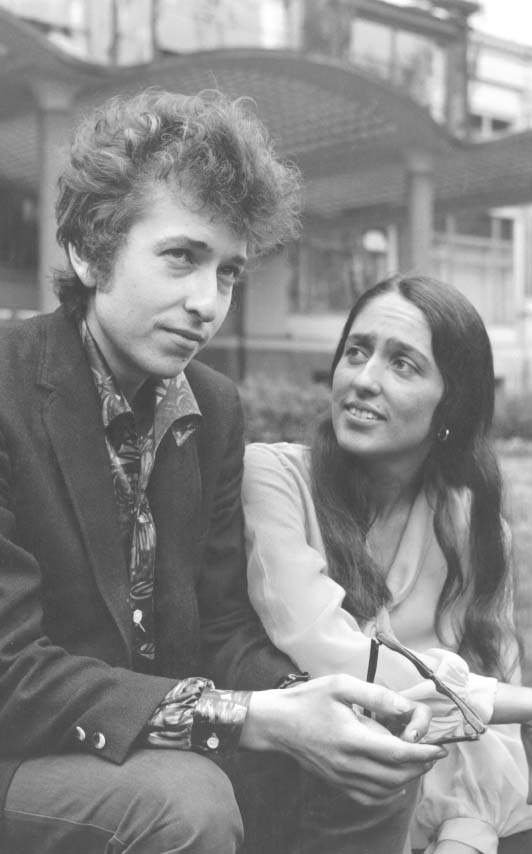
In 2014, the handwritten lyrics to ‘Like a Rolling Stone’ became the most expensive popular music manuscript to be sold at auction when it fetched just over $2 million at Sotheby’s. The lyrics – eventually four verses and a chorus – were based on Dylan’s writings on his return from a tour of England in 1965, a vengeful stream of ‘vomit’ directed at an unknown antagonist, as he later recalled.
When the song was finally released, it changed lives. Bruce Springsteen said the opening snare shot was as if somebody had ‘kicked open the door to your mind’. Paul McCartney was almost hypnotized: ‘It seemed to go on and on forever. It was just beautiful.’ Even Frank Zappa, worldly beyond his years, thought the game was up. ‘When I heard “Like a Rolling Stone”, I wanted to quit the music business,’ he said, ‘because I felt “If this wins and it does what it’s supposed to do, I don’t need to do anything else”.’
But the release of Bob Dylan’s acerbic single in the summer of 1965 was far from an uncomplicated process. The life of this song began to take shape well before its improbable assault on the charts. It was brought to the songwriter’s band during the recording sessions for Highway 61 Revisited, the album that would transform Dylan’s working methods and status in the popular music pantheon. The release in 2015 of The Cutting Edge 1965–1966, the 12th in Dylan’s Bootleg Series, reveals the slow metamorphosis of ‘Like a Rolling Stone’ into the masterpiece it would become. The box set devotes no less than an entire disc to various rehearsals and abandoned versions of the song. It draws vivid portraits of Dylan the experimentalist and Dylan the perfectionist at war with each other as the studio clock ticked away. Here was pop in its most anti-ephemeral form, built to last, as laden with significance as any heftier work of high art.

The song’s beginning was inauspicious. Take one is an instrumental run-through in 3/4 time, lurching like a Bavarian drinking song with Dylan’s febrile harmonica leading the melody. ‘I got lost, man,’ says Dylan after one minute. ‘Did you get lost?’ Pianist Paul Griffin reminds the group of the chord sequence. On take four, Dylan unleashes his vocal for the first time: ‘You threw the bums a dime, didn’t you?’ he sings, and immediately clears his throat, the vehemence of the lyric proving too much for him. ‘My voice has gone,’ he finally tells the band.
The song is remade, turned into a more orthodox and quicker 4/4 tune, and its first rehearsal sees Dylan’s anger muted. His tone is more sardonic, the vocal more reliable. But it lacks the righteous sneer that the devastating lyric demands. And the tempo is too even.
On take four of the remake, serendipity strikes. Session guitarist Al Kooper, 21, a friend of the band, walks in holding his guitar, hoping to join in. He is deemed surplus to requirements, but Dylan decides he wants an organ in addition to the piano, and Kooper volunteers to fill in. He improvises his part, as he would later recall, ‘like a little kid fumbling in the dark for a light switch’. And suddenly the song turns into the tumbling, cascading version that will become the finished article.
Dylan is still not happy. He orders 11 more takes of the song, experimenting at one point with a quicker, shuffling tempo, while on another version drummer Bobby Gregg tries some military-style fills. But these remakes are markedly inferior. Dylan and his musicians have already nailed it.
The song was released a month later, at more than six minutes long, much to the disapproval of Columbia Records. What did they know? ‘Like a Rolling Stone’ reached the Top 10 of most charts, nestling at Number 2 in the US behind The Beatles’ ‘Help!’, another, altogether poppier, cry of existential disarray.
The song has been covered in 50 years’ worth of musical styles, and is regularly voted the greatest pop song of all time by those lovingly compiled glossy magazines that wish it was still 1965. Observers have studied the lyrics scribbled in the rare manuscript documents scrupulously to find any hint of the identity of Dylan’s victim in the song. All they found were some doodles of a chicken, a hat, and the head of a deer.
Peter Aspden